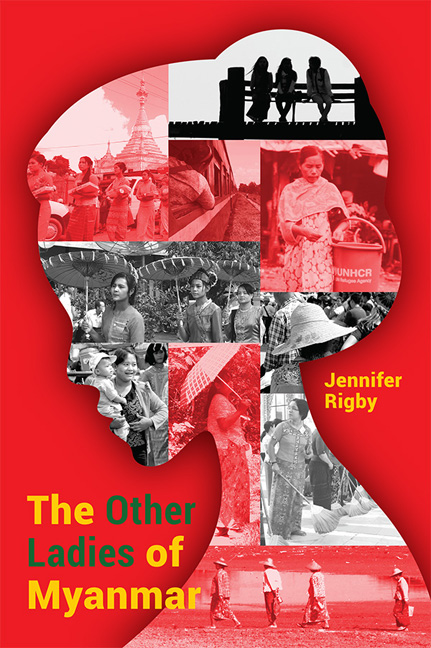Book contents
- Frontmatter
- Dedication
- Contents
- Preface
- Acknowledgements
- Introduction
- Timeline
- 1 The Activist: Cheery Zahau
- 2 The Feminist Buddhist Nun: Ketu Mala
- 3 The Survivor: Mi Mi
- 4 The Businesswoman: Yin Myo Su
- 5 The Environmental Campaigner and Princess: Devi Thant Cin
- 6 The Artist: Ma Ei
- 7 The Refugee Sexual Health Nurse: Mu Tha Paw
- 8 The Rohingya and Human Rights Champion: Wai Wai Nu
- 9 The Farmer: Mar Mar Swe
- 10 The Pop Star: Ah Moon
- 11 The Politician: Htin Htin Htay
- 12 The Archer: Aung Ngeain
- Conclusion
- About the Author
- Frontmatter
- Dedication
- Contents
- Preface
- Acknowledgements
- Introduction
- Timeline
- 1 The Activist: Cheery Zahau
- 2 The Feminist Buddhist Nun: Ketu Mala
- 3 The Survivor: Mi Mi
- 4 The Businesswoman: Yin Myo Su
- 5 The Environmental Campaigner and Princess: Devi Thant Cin
- 6 The Artist: Ma Ei
- 7 The Refugee Sexual Health Nurse: Mu Tha Paw
- 8 The Rohingya and Human Rights Champion: Wai Wai Nu
- 9 The Farmer: Mar Mar Swe
- 10 The Pop Star: Ah Moon
- 11 The Politician: Htin Htin Htay
- 12 The Archer: Aung Ngeain
- Conclusion
- About the Author
Summary
At the beginning of this book, I talked about hope, and how the world's hope in Aung San Suu Kyi has all but died as her government oversees what has all the hallmarks of genocide against the Rohingya in Rakhine State.
But I also talked about how, for all her faults, it was a speech by Aung San Suu Kyi that first set me on the path of meeting the remarkable women whose stories you have just read.
“Democracy is belief in the people,” she said, speaking at the rally I mentioned in the Preface, as the sun beat down on the crowds in the fevered last few days before the November 2015 election.
A few days later, I was in the throng outside the NLD's headquarters in Yangon as the election results came in.
This time, it was raining, proper big droplet, soak-you-to-the-skin rain, but the mood was jubilant. Many were wearing NLD red, and some had bandanas knotted around their heads. Everyone was singing, and some were crying with joy as they watched the results arrive in Myanmar's first openly contested election in decades.
One man looked at the sky behind us. “Rain?” he said in English. “No problem!”
But for me and my kit, it was a slight problem, so I headed off to find shelter for a few hours until the rain eased off. Actually, as I walked towards a nearby café, the rain only got more intense; really hammering it down as my friend and I nudged past the human chain of volunteers forming a protective barrier between the revellers and the traffic.
With hopeless umbrellas and flooded streets, trousers plastered to our thighs and flip-flops in hand (nearly washed away by the flood), we pushed open the café doorway.
There was a beauty salon upstairs where we thought we could possibly borrow towels. Walking meekly up the staircase, leaving little rivulets of rainwater cascading down behind us, we were seized and bundled into a side room.
Switching on the air-con to the highest setting (to heat us up and take away the moisture from — well, us), the beauticians grinned and gestured at hairdryers and towels.
They didn't speak much English and I hardly speak any Burmese, but the message was clear: get in here, you silly foreigners, and let us help you.
- Type
- Chapter
- Information
- The Other Ladies of Myanmar , pp. 124 - 126Publisher: ISEAS–Yusof Ishak InstitutePrint publication year: 2018

